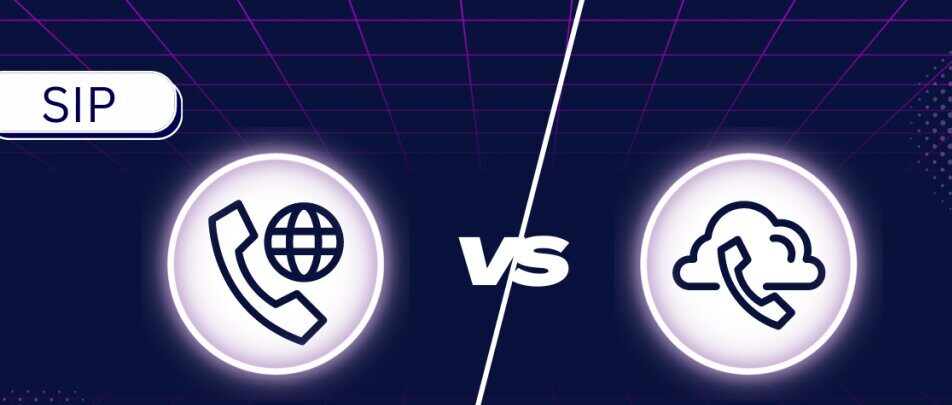Session Initiation Protocol (SIP) and Signaling System 7 (SS7) are two of the most commonly used protocols in modern telecommunications networks. Both protocols play a critical role in enabling voice and data communications, but they differ in their approach and capabilities. In this article, we will explore the key differences between SIP and SS7, as well as their respective benefits and use cases.
What is SIP?
SIP is a signaling protocol that is used to establish and manage multimedia sessions, such as voice and video calls, instant messaging, and file sharing, over IP networks. SIP is based on a client-server architecture, in which the client initiates the session and sends requests to the server, which then responds with a series of messages that establish the session. SIP is widely used in VoIP (Voice over IP) and UC (Unified Communications) applications, and is supported by a wide range of devices and platforms.
One of the key benefits of SIP is its flexibility and extensibility. SIP is designed to be open and interoperable, which means that it can be used with a wide range of devices and platforms, and can be extended to support new features and functionality. SIP also supports a wide range of media types, including voice, video, and messaging, which makes it a versatile protocol for multimedia communications.
What is SS7?
SS7 is a signaling protocol that is used to manage and control telephone calls and other communications on traditional PSTN (Public Switched Telephone Network) networks. SS7 provides a wide range of features and functionality, including call setup, call routing, call teardown, and network management. SS7 is a complex protocol that uses a variety of messages and signaling points to enable communications between different networks and devices.
One of the key benefits of SS7 is its reliability and stability. SS7 is a proven technology that has been used for many years in traditional telephone networks, and has a high level of redundancy and failover capability. SS7 also provides a high degree of security, with features such as authentication, encryption, and access control.
SIP vs. SS7: Key Differences
While both SIP and SS7 are used for signaling and communication, there are several key differences between the two protocols:
- Architecture: SIP is based on a client-server architecture, while SS7 uses a peer-to-peer architecture.
- Media types: SIP supports a wide range of media types, while SS7 is primarily focused on voice and data communications.
- Network type: SIP is used on IP networks, while SS7 is used on traditional PSTN networks.
- Scalability: SIP is highly scalable and can support large numbers of users and sessions, while SS7 has limited scalability and is best suited for smaller networks.
- Security: SIP has limited security features and is vulnerable to a wide range of attacks, while SS7 has a high degree of security and is difficult to compromise.
SIP and SS7 Use Cases
SIP and SS7 are used in a wide range of applications and industries, including:
- VoIP and UC: SIP is widely used in VoIP and UC applications, which allow users to make voice and video calls, send messages, and share files over IP networks.
- Telecommunications: SS7 is used in traditional telephone networks to manage and control telephone calls and other communications.
- Financial services: SS7 is used in the financial industry to enable secure and reliable communications between banks and other financial institutions.
- Public safety: SS7 is used in emergency services networks to enable reliable and secure communications between emergency responders.
Conclusion
SIP and SS7 are two of the most important protocols in modern telecommunications networks. While they have some similarities in terms of their role in signaling and communication, they differ in their architecture, media types, network type, scalability, and security. SIP is a flexible and extensible protocol that is used primarily in IP networks, while SS7 is a proven and reliable protocol that is used primarily in traditional PSTN networks.
Both protocols have their own strengths and weaknesses and are used in a variety of applications and industries. SIP is well-suited for multimedia communications, such as voice and video calls, instant messaging, and file sharing, while SS7 is best suited for managing and controlling telephone calls and other communications on traditional telephone networks. SIP is highly scalable and can support large numbers of users and sessions, while SS7 has limited scalability and is best suited for smaller networks.
In terms of security, SIP has limited security features and is vulnerable to a wide range of attacks, while SS7 has a high degree of security and is difficult to compromise. This makes SS7 a preferred choice for applications and industries that require high levels of security, such as financial services and emergency services.
SIP and SS7 play a critical role in enabling voice and data communications in modern telecommunications networks. Understanding the differences and benefits of each protocol is important for businesses and individuals who rely on these technologies for their daily communications.
By choosing the right protocol for their specific needs and use cases, businesses and individuals can ensure that they have a reliable, secure, and scalable solution for their communications needs.
